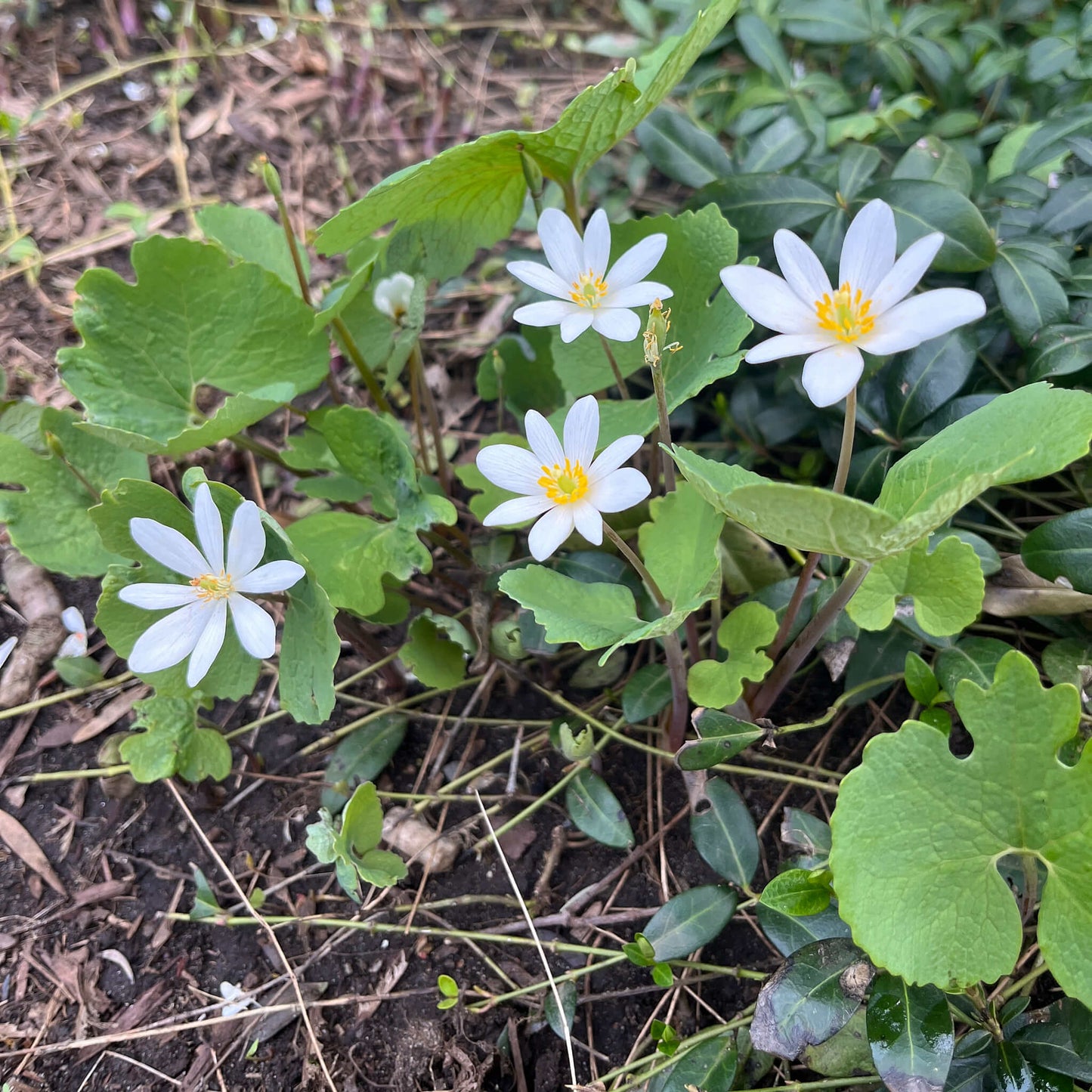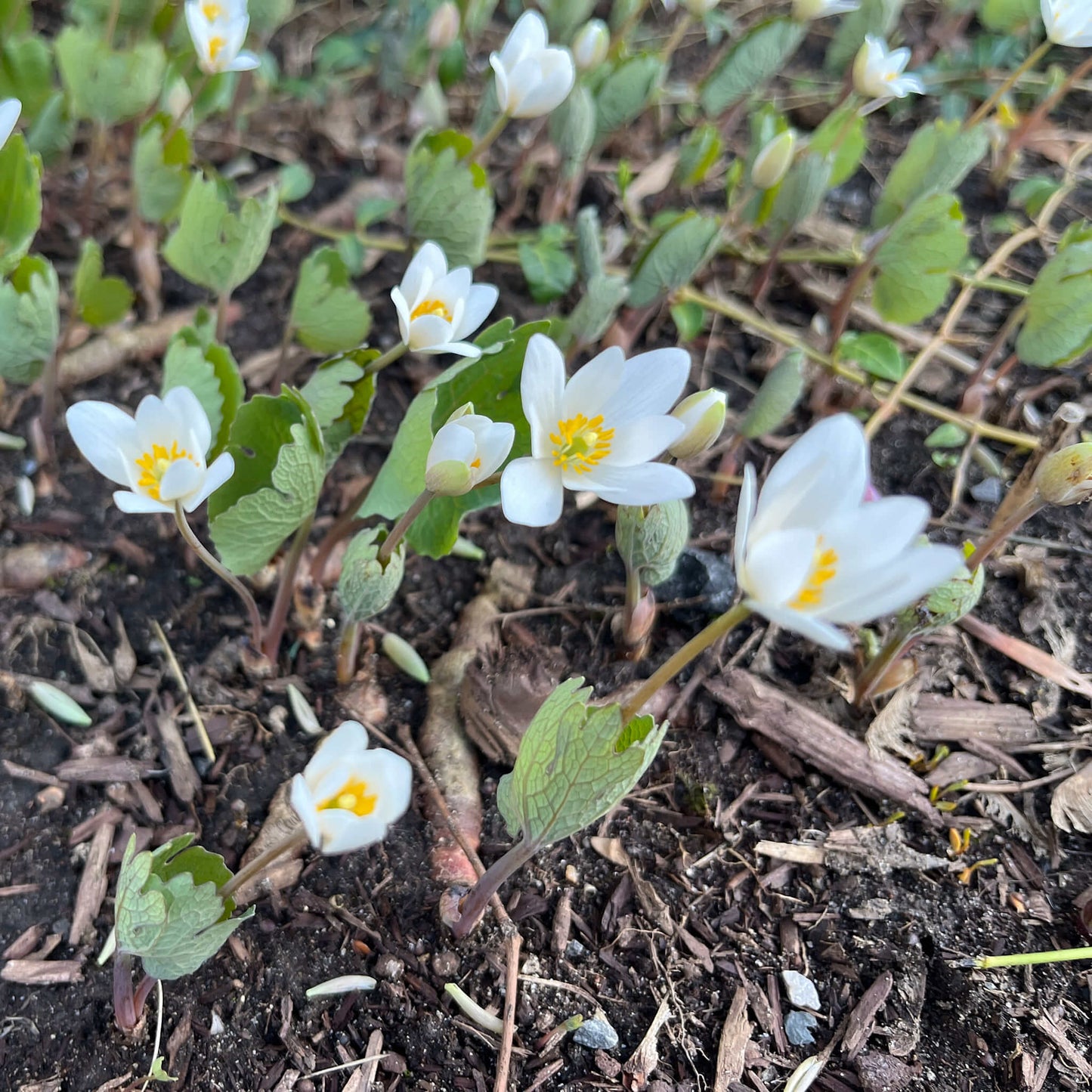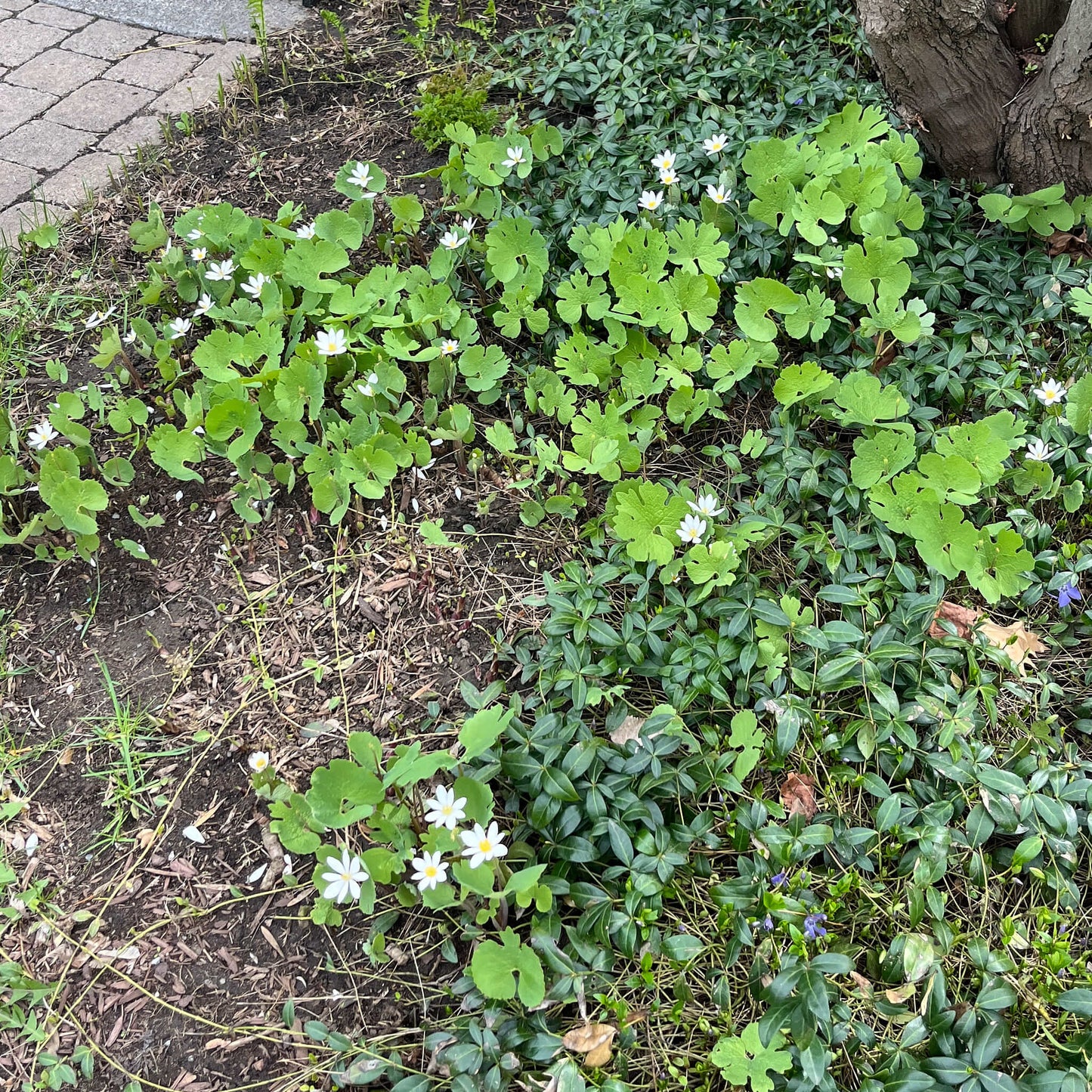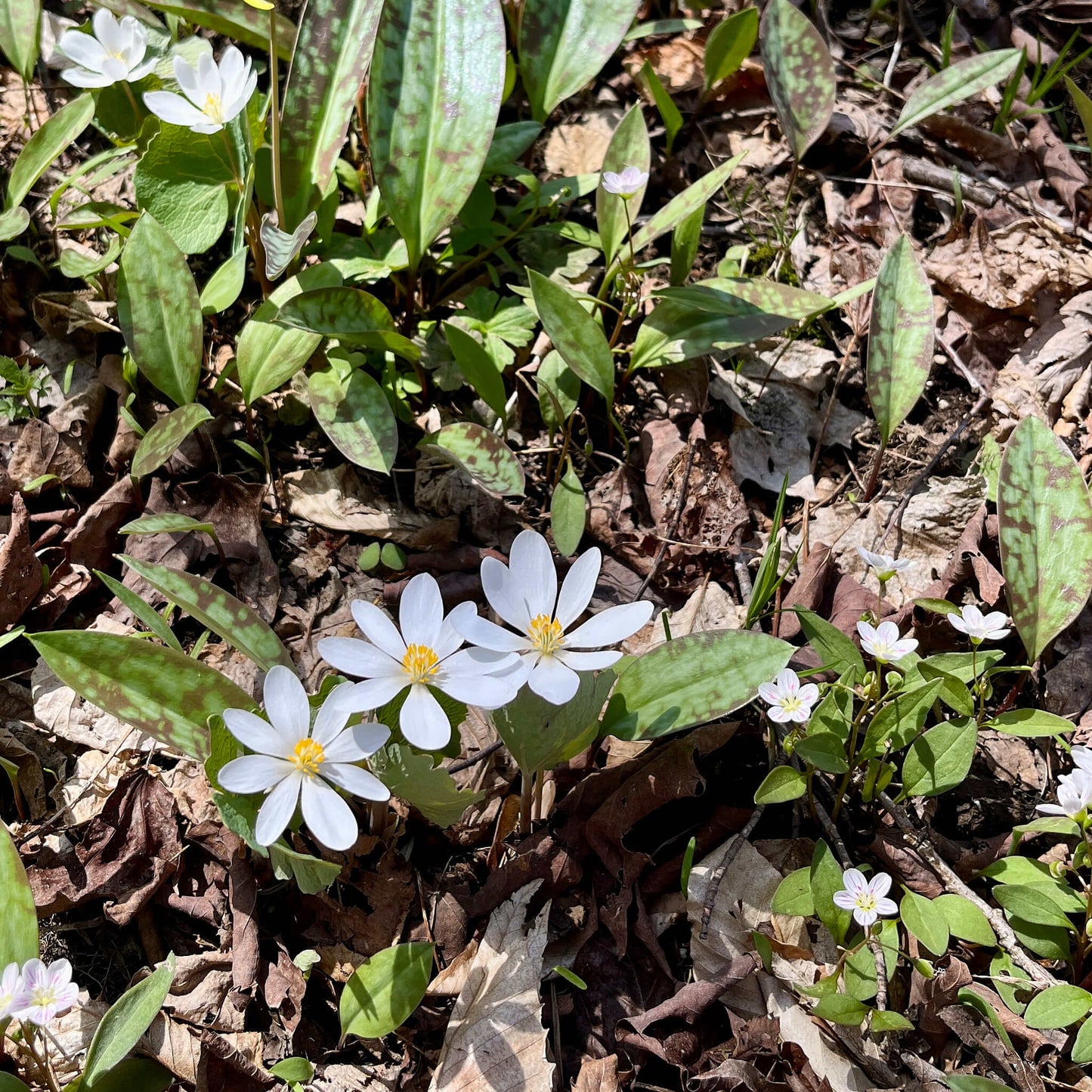For successful seedlings,
see the growing notes at the bottom of the page!
Bloodroot (Sanguinaria canadensis) is a perennial herbaceous plant that grows 20 to 40 cm tall. It is distinguished by its early spring flowering: solitary white flowers, composed of delicate petals, appear at the very beginning of spring, often before the foliage has fully unfolded. After flowering, the plant develops colonies through its thick rhizomes, red-orange in colour, which release a characteristic latex.
Bloodroot grows in rich, cool woodlands, in well-drained soils, often calcareous. In Quebec, it colours the forest floor in spring in certain deciduous woodlands.
Medicinal and culinary uses
Traditionally, bloodroot has been used in herbal medicine for its expectorant, stimulant, and antiseptic properties. The rhizome, rich in alkaloids (including sanguinarine), was employed in decoctions or tinctures to treat respiratory ailments, stimulate circulation, and as a topical antiseptic. Externally, it was also used to prepare ointments or poultices for the treatment of warts and certain skin conditions.
However, it is important to note that the plant is toxic and may cause serious adverse effects (nausea, vomiting, irritation) if consumed in excess. It is therefore not used in cooking.
Ecological roles
Bloodroot contributes to the spring biodiversity of deciduous forests. Its early flowering provides nectar and pollen resources for solitary bees, hoverflies, and certain beetles emerging after winter. Its seeds are dispersed by ants (myrmecochory) thanks to their elaiosome, which favours their spread in the woodland. By forming dense colonies, the plant helps stabilize forest soils and supports the resilience of spring understory plant communities.
Bloodroot seeds require cold stratification to ensure germination. See the cultivation notes below for more details.
Akène cannot assume any responsibility for the use of plants for therapeutic purposes. Always seek advice from a professional before using a medicinal or edible plant.
Sowing and Growing
Technical Details
Seeds per packet: 20
Family: Papaveraceae
Scientific name: Sanguinaria canadensis
Life cycle: Perennial
Hardiness zone: 3
Soil type: Sandy to loamy
Soil moisture level: Humid
Soil - additional attributes: Rich. Well-drained.
Light: Part shade, shade
Blooming: April to May
Spacing: 35 cm
Height: 40 cm
Deer resistance: High
Stratification: 2 x 60 days
Scarification: No
Germination time: Slow and irregular, can take several months
Sowing depth: 6 mm





